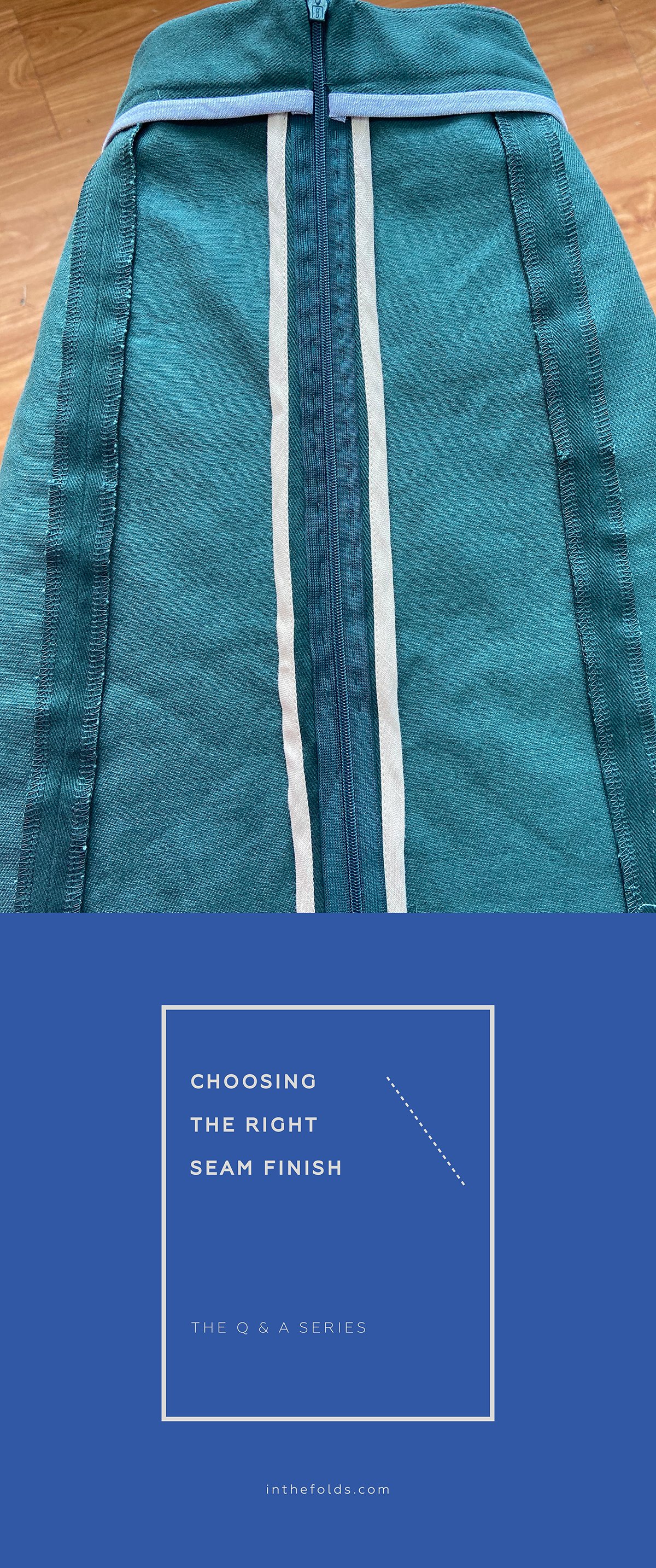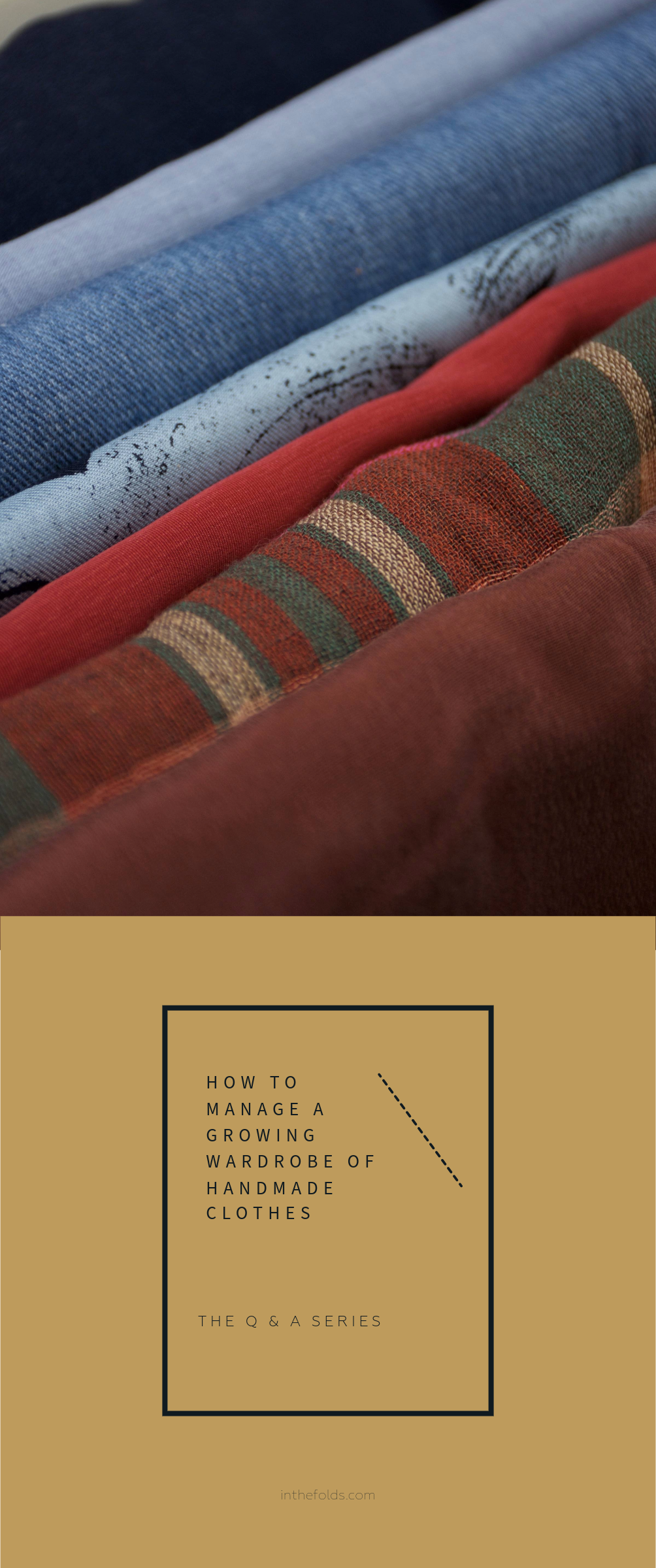THE Q & A SERIES
Choosing the right seam finish
I am just about to start cutting out the Flynn pattern for the first time. I bought the pattern because I loved the style of the jacket, but was so excited to see the steps on seam bindings when I was looking at the instructions. I am new to sewing and have been wanting to make my mom a quilted vest and jacket, but wasn’t sure how to finish the seams. I am hoping that once I finish the Flynn (in linen) that I will have a better idea of how to do that when I make a quilted pattern :-)
Thank you!
Julianne
Hi Julianne,
I am pleased to hear you will be making the Flynn jacket!
It is a really fun sew with loads of new skills to learn - especially binding seams. This month we’re working on beautiful finishes with our Curated by ITF community and I thought it would be a great opportunity to talk about seam finishes.
When you’re working with a sewing pattern, you’ll see that a number of finishes are referred to. The application of a seam finish will depend on the garment type, suggested fabric and the seam type. Today I'll run you through the most used seam finishes so you have a little reference the next time you’re trying to decide between two different seam finishes.
Different seam finishes and what they're for...
Zig-zag finish
Zig-zag finish is one of the quickest and simplest ways to finish raw edges as you can do it on your regular sewing machine (as long as it has a zig-zag stitch function).
What's a zig-zag finish for?
This finish is best suited to mid-weight, stable fabrics.
On certain light-weight fabrics you run the risk of the fabric being pulled into the teeth or bobbin opening on your machine. To check this you should always do a test run before trying it on your garment.
One thing to keep in mind is that fabrics can still fray when finished this way, so after washing the garment a few times you might notice the seams not looking as neat as they did originally (although this will depend on the fabric type and the way the seams have been cut).
Turn and straight stitch
One of the simplest ways to finish a seam is to turn back the raw edges of the seam allowance and stitch.
This is a good finish to try if you don't own a serger/overlocker and don't have a zig-zag stitch on your regular sewing machine. It's also a great alternative if you would like a cleaner finish.
What's this finish for?
This finish is suitable for almost all fabrics, although it works better on straight seams, rather than curves. If working with light-weight or sheer fabrics, it is suggested that you consider French seams before choosing this option.
This finish will work best for seams that will be pressed open. Be careful applying this finish to heavy-weight fabrics as it will add bulk to the seams.
More details on this technique can be found here.
French Seams
French seams are great for light to mid-weight fabrics, especially those that are prone to fraying. French seams are also the best choice of finish if you are using a sheer fabric.
French seams will give you a beautiful, clean finish, without the need for an overlocker/serger. Although French seams can be a little time consuming, they are very satisfying and give one of the most beautiful finishes possible.
What's this finish for?
This finish is suitable for light-weight to mid-weight fabrics or sheer fabrics.
Tips on sewing French seams can be found here.
Did you know you can even sew in-seam pockets with French seams? More info on how to do that can be found here.
Flat felled seams
Flat felled seams are one of the strongest seam finishes. The raw edges are enclosed inside the seam (like French seams), but it's pressed flat and stitched to keep the seam nice and flat.
What's this finish for?
Flat felled seams are suitable for hard wearing items such as jeans and jackets. You may also use this finish for making shirts.
Bias bound seams
Bias bound seams are strong and hard wearing. This finish gives you a beautiful, clean finish on the right and wrong side of the seam, by wrapping binding around a raw edge. Bias bound seams also add visual interest to the inside of garments.
What's this finish for?
Great for seams that will be exposed (such as in unlined jackets), formal wear and also centre back seams (it can be a really nice finish either side of a zip opening).
Hong Kong bind
A Hong Kong binding is strong and hard wearing. This seam finish gives you a beautiful, clean finish and adds visual interest to the inside of garments.
From the right side, a Hong Kong bind looks the same as a bias bound seam. The difference is that a Hong Kong bind is finished differently on the unexposed side of the seam.
What's this finish for?
Great for seams that will be exposed (such as unlined jackets). A Hong Kong bind is an alternative to bias bound seams and is especially suited to thick or bulky fabrics.
It is an ideal finish to use when the back of the seam will not be exposed and you would like to minimise bulk, such as the edge of facings and waistbands.
More details about sewing bias bound seams and Hong Kong binding can be found here.
We’ve shared quite a few posts about bindings in the past, so if you’d like to know more about making your own binding, finishing armholes or necklines, attaching single fold bias binding or attaching double fold binding click on the links to learn more.
Happy sewing,
Emily
RESOURCES MENTIONED IN THIS ISSUE
For more issues of the Q & A series, you can check out the archive here.
WHAT YOU’VE BEEN MAKING
Peppermint Peplum top made by @kristibee777
Barkly skirt pattern made by @tonahangen












